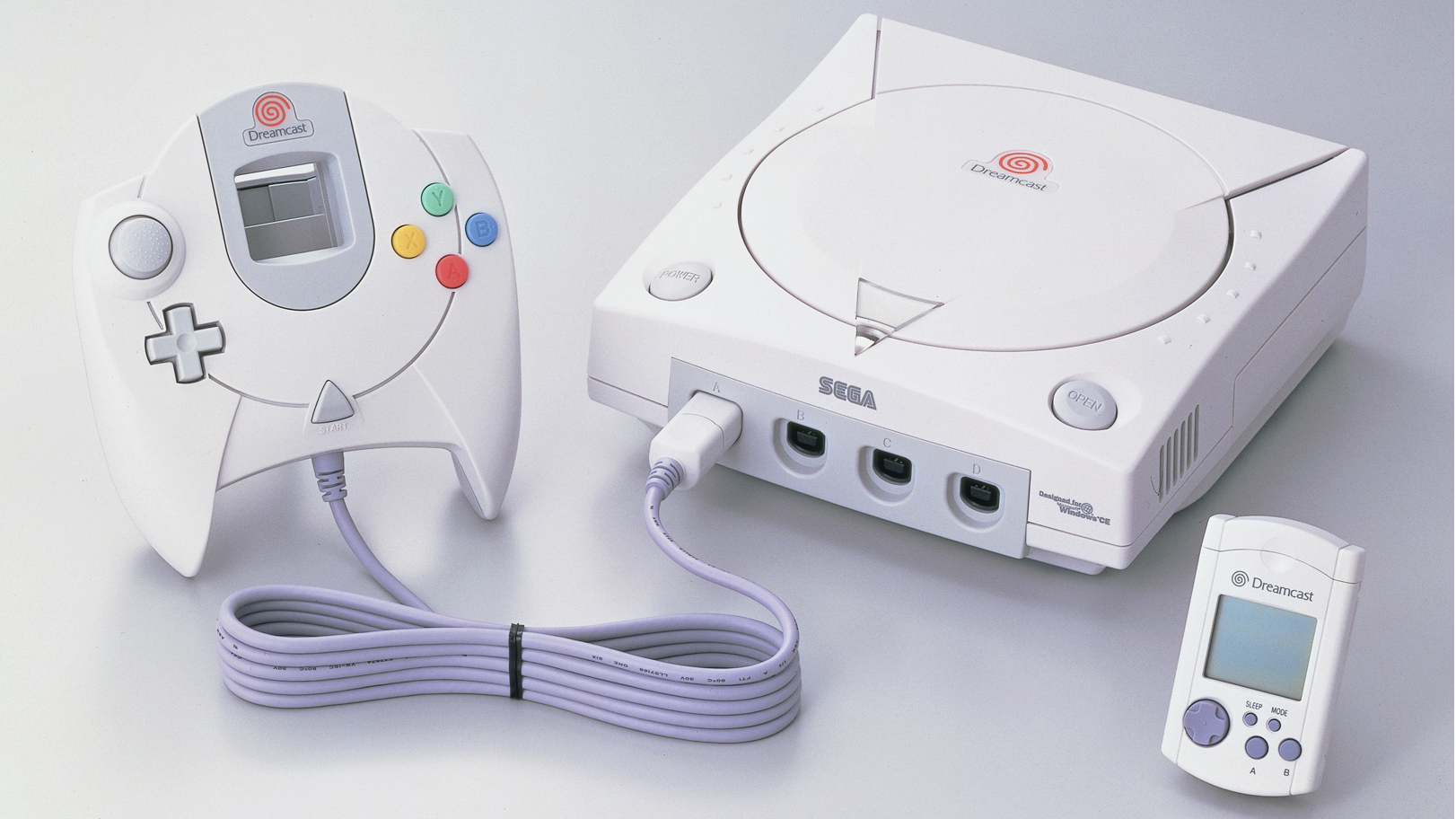
Despite winning the occasional skirmish, Sega's battle with Nintendo amid the wider console wars was one that it was destined to lose, with the rise of then-newcomer Sony not doing it any favors. But while Sega would ultimately retire from the console wars, it indisputably left its mark on its rivals.
Launched in Japan on November 27, 1998 – it was almost a year later that it arrived in the US and Europe – the Dreamcast wasn't enough to recoup the huge losses Sega suffered during its Saturn years. Its life would be cruelly cut short, with the console officially discontinued at the beginning of 2001.
But if it burned out too soon, how brightly it shone in those brief years. Maybe it's just my diehard Sega fanboy from yesteryear saying this, but despite not being financially successful, the Dreamcast was Sega at its creative best, and remains one of my favorite consoles of all time.
History may be written by the winners, but the Dreamcast left a legacy with innovations that would go on to inspire console generations of the future.
Brave new online world
Every Dreamcast included a modem for players to dial up to the Internet. Even if 33.6kbit/s (or 56kbit/s for the US) sounds laughably slow by today's standards, it was enough to usher in the dawn of online console gaming for "up to 6 billion players", as boasted in its UK advertising campaign.
At the forefront was Sonic Team during one of its most prolific periods. Besides releasing two brand new 3D Sonic games during the Dreamcast's lifetime, the studio was responsible for creating the console's first online multiplayer game, the simple but chaotic competitive puzzler ChuChu Rocket.
Its crowning achievement would be Phantasy Star Online, the first online RPG for consoles. Although owing a debt to Diablo on PC, this was a much more colorful affair, with its many character classes and races beautifully rendered in 3D environments.
Get daily insight, inspiration and deals in your inbox
Sign up for breaking news, reviews, opinion, top tech deals, and more.
The real magic, however, came once you connected online and found fellow players in the spaceship lobby, as you made nervous and awkward conversation, either through preset phrases or via an actual keyboard, before teaming up to explore and tackle the monsters down on the mysterious planet of Ragol.

Despite only a handful of maps to explore, these fleeting alliances, exchanging pleasantries, and compelling quest for ever more rare and powerful loot would see me sinking hours and hours into Phantasy Star Online, and running up a huge phone bill (yes, these were the days when using the Internet was charged by the minute).
Online gaming would get more robust and sophisticated later with Xbox Live, but it's hard to imagine our present where everyone can transport themselves into online worlds like Fortnite, Destiny and Monster Hunter: World without remembering who pioneered the dream.
Random accessories memories
Sega also doubled down on its arcade heritage. Since its new arcade board NAOMI was built with the same architecture as the Dreamcast, this resulted in many quick arcade-perfect ports like Crazy Taxi and The House of the Dead 2.
It wasn't just that these games looked as pretty as their arcade counterparts, it was also about bringing that unique arcade experience home.
Sure, there were still plenty of great fighting games, but there was also the fishing controller for Sega Bass Fishing or the super-silly maracas for rhythm game Samba de Amigo, almost certainly too niche, but nonetheless utilizing motion controls years before the Wii remote materialized.
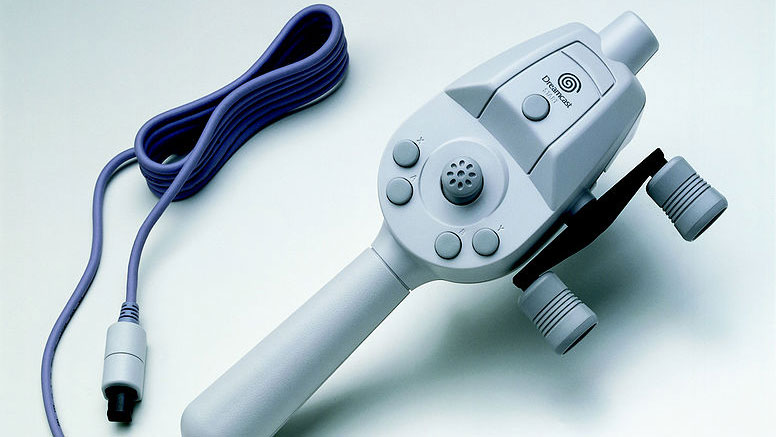
Perhaps the most outrageous peripheral was the microphone that slotted into the Dreamcast controller, letting you converse with a bizarre fish-man creature Seaman, a game narrated by none other than the late Leonard Nimoy.
When you think of today’s headsets and how commonplace voice chat is, it's incredible to think it began so much more leftfield.
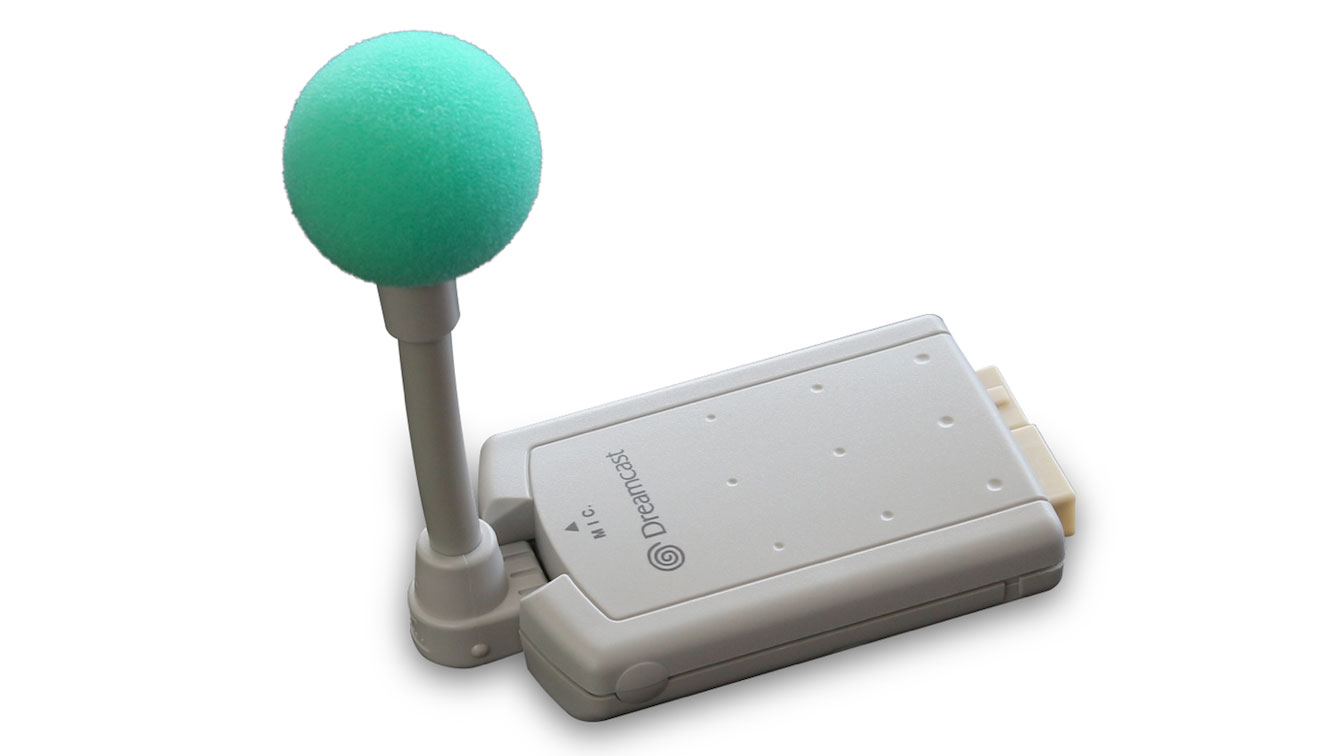
Sega also innovated with the use of memory cards, which was how you had to save your progress in games long before hard drive storage became the norm.
The Visual Memory Unit (VMU) was like a mini-console with its own display and buttons to play mini-games, even if they were fairly rudimentary - at best you had a virtual pet like the Chao in Sonic Adventure.
While slotted into the controller, the VMU display was also intended as a second screen, though this was rarely utilized.
That didn't stop Sony from copying the idea with its own PocketStation (released only in Japan), while the concept of second-screen functionality would be explored by Nintendo, from the DS to the less successful implementation on Wii U.
Mr blue sky gaming
While the Mega Drive/Genesis era saw Sega as cool and edgy compared to old-fashioned Nintendo, the Dreamcast era can be best remembered for its optimism and originality through its games.
There was of course Shenmue, back then the most expensive video game ever made, with an attention-to-detail and realism in open-world design that would pave the way for Ubisoft and Rockstar.
But that would be to overlook Sega's other divisions in creative overdrive, the stuff that typifies what we think of as 'blue-sky gaming', an antidote to the brown and grey gritty real-world dystopia that have plagued most modern games.
Seeing Dreamcast games in action is enough to bring back warm colorful memories of what gaming is about.
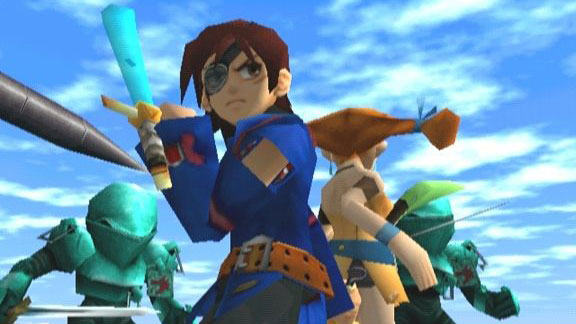
There's Skies of Arcadia, a JRPG with vibrant worlds and characters brimming with swashbuckling charm and charisma, a world away from the angsty emo of Final Fantasy.
Meanwhile, Jet Set Radio oozed counter culture with funky style, kickstarting the cel-shading technique in game visuals while its sweet soul soundtrack is still one of the catchiest around.
Although publisher EA publicly announced its decision not to support the Dreamcast, Sega's newly acquired studio Visual Concepts would do a lot of the heavy lifting to fill the all-important sports gap in the US market.
As it turns out, its NFL and NBA titles were among the best-selling Dreamcast games in the US, while the studio maintains its pedigree as the developer in the 2K sports titles.
Far from just appealing to the same hardcore gamers, Sega was also opening up and experimenting, such as the oddball curios of Samba de Amigo and Seaman, as well as attempting to attract a more casual audience, which gave the world Space Channel 5 and Rez.
The good news is that the Dreamcast's legacy has continued with Sega porting its best sellers to other consoles as well as Steam. With reports that classic games coming to old rival Nintendo's Switch under the Sega Ages brand may include Dreamcast titles in the future, it seems the dream is still alive.
The best Dreamcast games playable on other platforms
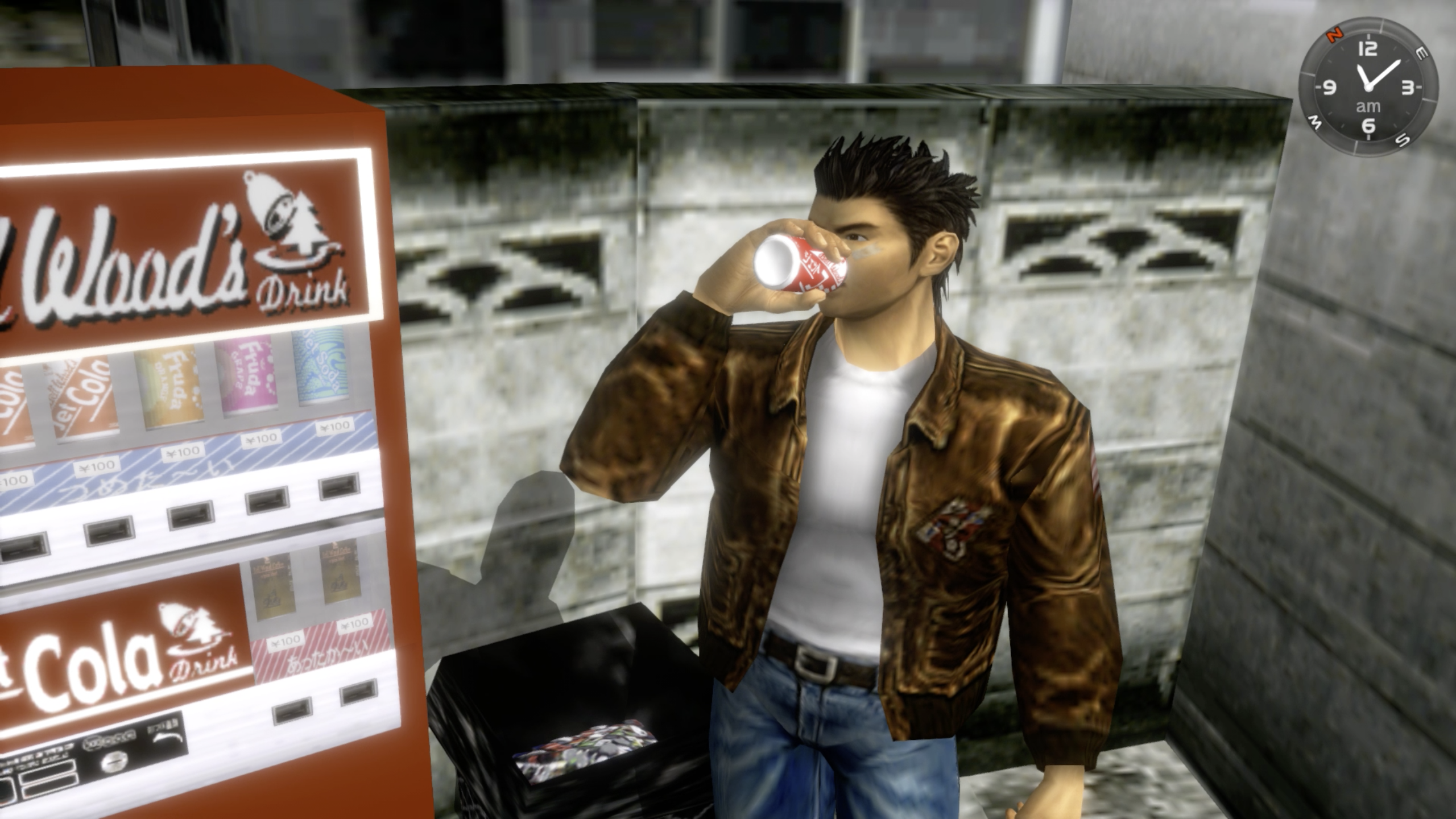
Shenmue (available on PS4, Xbox One, PC)
Open world games have gotten more vast and sophisticated over the years, but it's the intimate attention-to-detail of 1980s small-town Japan and timeless music that still gives Shenmue its creaky charm.
Although the core is a pretty po-faced revenge story, it's the mundane ways you go about filling the time, from buying gachapon toys to playing Space Harrier down at the local arcade, that somehow linger in the memory. For better or worse, it also introduced us to QTEs.
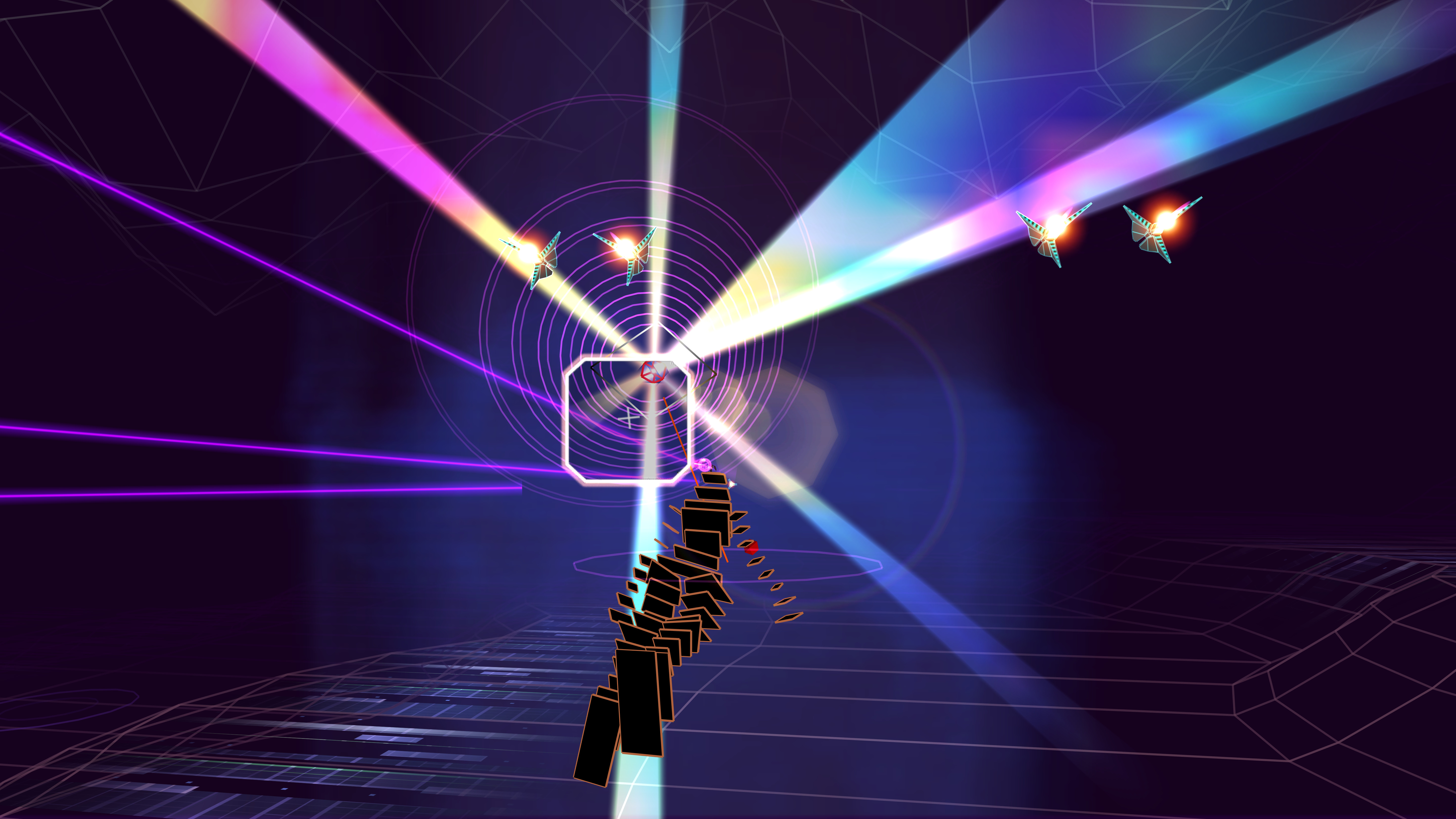
Rez (Rez Infinite available on PS4, PC)
To call Rez a futuristic on-rails shooter akin to the Panzer Dragoon series on the Saturn would be a disservice. This was the beginning of producer Tetsuya Mizuguchi's journey exploring synaesthesia, whereby stimulating one sense can trigger a response in another, like seeing sound. As your evolving avatar flies through abstract wireframe worlds, shooting enemies trigger their own unique sounds that enhance the clubby techno beats pumping throughout. The experience back then was sublime, but it's even more transcendent now that VR has been incorporated.
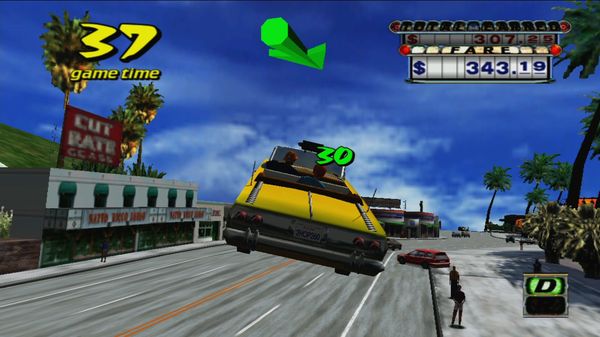
Crazy Taxi (available on PC, iOS)
Causing mayhem on the sunny streets of San Francisco while racking up huge tips was the aim of the game in Crazy Taxi. It was also literally a product of its time, with licensed music from punk bands Bad Religion and The Offspring, as well as featuring real-life businesses like KFC and Tower Records. While losing these in later ports takes away some of the charm, the simple loop of rolling in customers and pulling off crazy stunts still makes this an arcade classic.
Alan Wen is a freelance journalist writing about video games in the form of features, interview, previews, reviews and op-eds. His work has appeared in print including Edge, Official Playstation Magazine, GamesMaster, Games TM, Wireframe, Stuff, and online including Kotaku UK, TechRadar, FANDOM, Rock Paper Shotgun, Digital Spy, The Guardian, and The Telegraph.
